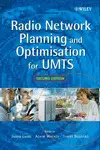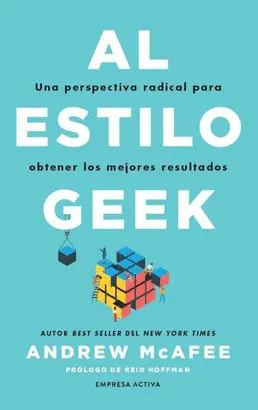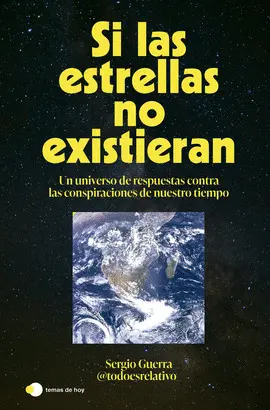- Editorial:
- WILEY
- Materia:
- Ciencia - STEM
- ISBN:
- 978-0-470-06533-4
RADIO NETWORK PLANNING AND OPTIMISATION FOR UMTS
JAANA LAIHO
WILEY: Radio Network Planning and Optimisation for UMTS, Second Edition, is a comprehensive and fully updated introduction to WCDMA radio access technology used in UMTS, featuring new content on key developments. Written by leading experts at Nokia, the first edition quickly established itself as a best-selling and highly respected book on how to dimension, plan and optimise UMTS networks. This valuable text examines current and future radio network management issues and their impact on network performance as well as the relevant capacity and coverage enhancement methods.
In addition to coverage of WCDMA radio access technology used in UMTS, and the planning and optimisation of such a system, the service control and management concept in WCDMA and GPRS networks are also introduced. This is an excellent source of information for those considering future cellular networks where Quality of Service (QoS) is of paramount importance.
Key features of the Second Edition include:
* High-Speed Downlink Packet Access (HSDPA) physical layer, dimensioning and radio resource management
* Quality of Service (QoS) mechanisms in network for service differentiation
* Multiple Input Multiple Output (MIMO) technology
* Practical network optimisation examples
* Service optimisation for UMTS and GPRS/EDGE capacity optimisation
* The hot topic of service control and management in WCDMA and GPRS networks, that has evolved since the first edition
Companion website includes:
* Figures
* Static radio network simulator implemented in MATLAB®
This text will have instant appeal to wireless operators and network and terminal manufacturers. It will also be essential reading for undergraduate and postgraduate students, frequency regulation bodies and all those interested in radio network planning and optimisation, particularly RF network systems engineering professionals.
Go to TOP
Biography:
WILEY: All three editors work on WCDMA research at Nokia Networks, Nokia Group, Finland. Jaana Laiho is currently Senior Research Engineer at Nokia Networks. More recently she has worked with CDMA issues, particularly UMTS WCDMA radio networks.
Achim Wacker is Senior Research Engineer at Nokia Networks, where he has studied the use of adaptive antennas in radio network planning and WCDMA radio networks.
Tomá Novosad is Senior Specialist at Nokia Networks, and previously worked at Motorola, European Cellular Infrastructure. Dr. Novosad is oriented towards network planning and WCDMA research, and his technical interests include wireless communication performance, digital modulations and spread spectrum systems.
Go to TOP
Cover & Flap Copy:
WILEY: Radio Network Planning and Optimisation for UMTS, Second Edition, is a comprehensive and fully updated introduction to WCDMA radio access technology used in UMTS, featuring new content on key developments. Written by leading experts in the field, the first edition quickly established itself as a best-selling and highly respected book on how to dimension, plan and optimise UMTS networks. This valuable text examines current and future radio network management issues and their impact on network performance as well as the relevant capacity and coverage enhancement methods.
In addition to coverage of WCDMA radio access technology used in UMTS, and the planning and optimisation of such a system, the service control and management concept in WCDMA and GPRS networks are also introduced. This is an excellent source of information for those considering future cellular networks where Quality of Service (QoS) is of paramount importance.
Key features of the Second Edition include:
* High-speed Downlink Packet Access (HSDPA) - physical layer, dimensioning and radio resource management
* Quality of Service (QoS) mechanisms in network for service differentiation
* Multiple Input - Multiple Output (MIMO) technology
* Practical network optimisation examples
* Service optimisation for UMTS and GPRS/EDGE capacity optimisation
* The "hot topic" of service control and management in WCDMA and GPRS networks, that has evolved since the first edition
Companion website includes:
Figures
Static radio network simulator implemented in MATLAB®
This text will have instant appeal to wireless operators and network and terminal manufacturers. It will also be essential reading for undergraduate and postgraduate students, frequency regulation bodies and all those interested in radio network planning and optimisation, particularly RF network systems engineering professionals.
MATLAB® is a registered trademark of The MathWorks, Inc.
Preface.
Acknowledgements.
Abbreviations.
1 Introduction (Jaana Laiho, Achim Wacker, Toma´s?Novos ad, Peter Muszynski, Petri Jolma and Roman Pichna).
1.1 A Brief Look at Cellular History.
1.2 Evolution of Radio Network Planning.
1.3 Introduction to Radio Network Planning and Optimisation for UMTS.
1.4 Future Trends.
2 Introduction to WCDMA for UMTS (Tomá Novosad, David Soldani, Kari Sipilä, Tero Kola and Achim Wacker).
2.1 MathematicalBackgrou nd of Spread Spectrum CDMA Systems.
2.2 Direct Sequence Spread Spectrum System.
2.3 CDMA in Cellular Radio Networks.
2.4 WCDMA Logical, Transport and Physical Channels.
2.5 WCDMA Radio Link Performance Indicators.
3 WCDMA Radio Network Planning (Achim Wacker, Jaana Laiho, Tomá Novosad, Terhi Rautiainen and Kimmo Terävä).
3.1 Dimensioning.
3.2 Detailed Planning.
3.3 Verification of Dimensioning with Static Simulations.
3.4 Verification of Static Simulator with Dynamic Simulations.
3.5 Optimisation of the Radio Network Plan.
3.6 Interference in WCDMA Multi-operator Environment.
3.7 Cell Deployment Strategies.
4 Radio Resource Utilisation (Achim Wacker, Jaana Laiho, Tomá Novosad, David Soldani, Chris Johnson, Tero Kola and Ted Buot).
4.1 Introduction to Radio Resource Management.
4.2 Power Control.
4.3 HandoverControl.
4.4 Congestion Control.
4.5 Resource Management.
4.6 RRU for High-speed Downlink Packet Access (HSDPA).
4.7 Impact of Radio Resource Utilisation on Network Performance.
5 WCDMAGSM Co-planning Issues (Kari Heiska, TomáNovos ad, Pauli Aikio, Chris Johnson and Josef Fuhl).
5.1 Radio Frequency Issues.
5.2 Noise Measurements.
5.3 Radio Network Planning Issues.
5.4 Narrowband and WCDMA System Operation in Adjacent Frequency Bands.
6 Coverage and Capacity Enhancement Methods (Chris Johnson, Achim Wacker, Juha Ylitalo and Jyri Hämäläinen).
6.1 Introduction.
6.2 Techniques for Improving Coverage.
6.3 Techniques for Improving Capacity.
6.4 Uplink Cell Load and Base Station Transmit Power.
6.5 AdditionalCarrier s and Scrambling Codes.
6.6 Mast Head Amplifiers and Active Antennas.
6.7 Remote RF Head Amplifiers.
6.8 Higher Order Receive Diversity.
6.9 Transmit Diversity.
6.10 Multiple Input Multiple Output in UTRA FDD.
6.11 Beamforming.
6.12 Rollout Optimised Configuration.
6.13 Sectorisation.
6.14 Repeaters.
6.15 Micro-cell Deployment.
6.16 Capacity Upgrade Process.
6.17 Summary of Coverage and Capacity Enhancement Methods.
7 Radio Network Optimisation Process (Jaana Laiho, Markus Djupsund, Anneli Korteniemi, Jochen Grandell and Mikko Toivonen).
7.1 Introduction to Radio Network Optimisation Requirements.
7.2 Introduction to the Telecom Management Network Model.
7.3 Tools in Optimisation.
7.4 Summary.
8 UMTS Quality of Service (Jaana Laiho, Vilho Räisa¨nen and Nilmini Lokuge).
8.1 Definition of Quality of Service.
8.2 End-user Service Classification.
8.3 Characteristics and Requirements of Services.
8.4 3GPP Bearer Concept.
8.5 Overview of 3GPP Quality of Service Architecture.
8.6 Quality of Service Management in UMTS.
8.7 Concluding Remarks.
9 Advanced Analysis Methods and Radio Access Network Autotuning (Jaana Laiho, Pekko Vehviläinen, Albert Höglund, Mikko Kylväjä, Kimmo Valkealahti and Ted Buot).
9.1 Introduction.
9.2 Advanced Analysis Methods for Cellular Networks.
9.3 Automatic Optimisation.
9.4 Summary.
10 Other 3G Radio Access Technologies (Jussi Reunanen, Simon Browne, Pauliina Erätuuli, Ann-Louise Johansson, Martin Kristensson, Jaana Laiho, Mats Larsson, Tomá Novosad and Jussi Sipola).
10.1 GSM Packet Data Services.
10.2 Time Division Duplex Mode of WCDMA (UTRA TDD).
Index.
Excerpt
Demand








